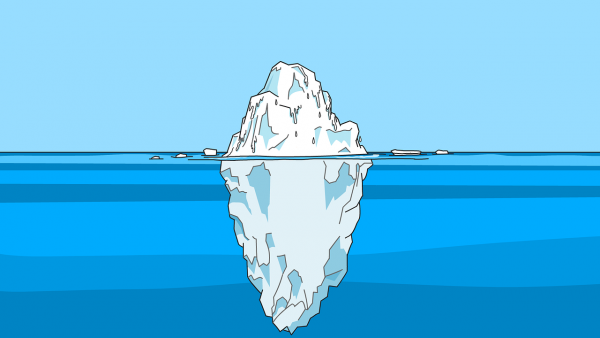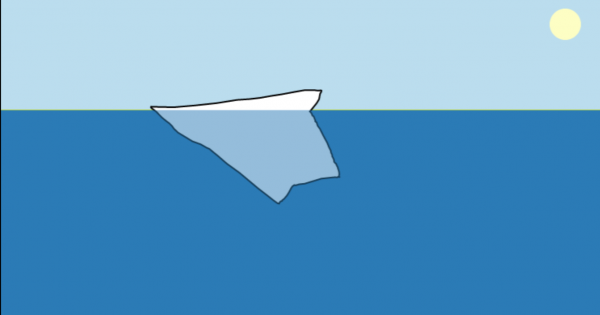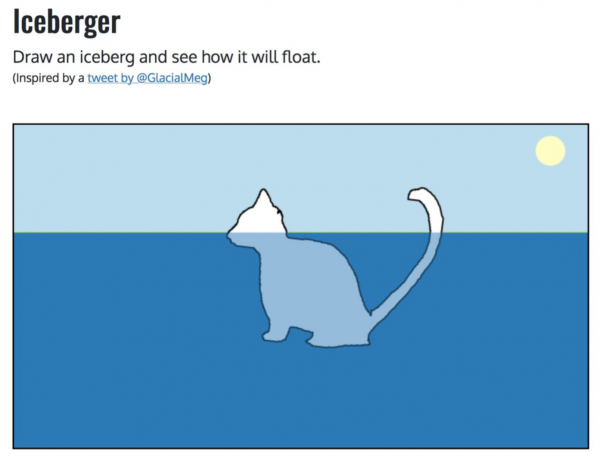Everyone has seen renderings of icebergs with small hills on top and vast spikes protruding into the depths, appearing to embody common knowledge that 90% of an iceberg sits underwater. But as interested scientists are quick to point out: these iconic configurations don’t reflect the way huge chunks of ice actually float in the world’s oceans.

When glaciologist and PhD student Megan Thompson-Munson posted a more realistic watercolor illustration of an iceberg, it stirred up a lot of attention, but that was just the tip of the proverbial…well, you know.
Inspired by Thompson-Munson’s post, software developer Joshua Tauberer decided to create a tool to help people visualize icebergs for themselves. On his new micro-site, Iceberger, visitors can quickly and easily trace out the shape of an iceberg then watch as it reorients itself to float more normally. Within a few seconds, one can see the physics of water and ice at work as the drawn form rotates on-screen.

Tauberer notes the limitations of his tool, pointing out that “in reality, an iceberg wouldn’t float exactly like this. Its three-dimensional distribution of mass and its relative density compared to the water are both significant factors that are only approximated here.” Still, it allows someone to draw a “conventional” iceberg then see how it moves, thus gaining a better intuitive understanding of how one would really float.
“While it’s true that only ~10% floats above the surface of the water,” explains Thompson-Munson, the classic stock-image “orientation is unstable and would actually not be found in nature. An elongated iceberg would not float on its head, but instead on its side.”
There are broader lessons here too for scientific illustrators; when we see a rendering, it shapes our understanding of reality. Drawing things (like icebergs) more accurately can help us better visualize typically unseen phenomena but also understand the underlying science that shapes our world (in this case: what literally lies just below the surface).




Comments (1)
Share
I enjoyed this, but had to check to make sure it isn’t an April Fool’s joke. I have never seen a drawing of an iceberg as an inverted ice cream cone. I’ve never seen an ice berg, either. …but I have spent hours sitting in proximity to ice floating in liquid in, conveniently transparent, glasses. I assumed an ice berg floated in much the same manner as an ice cube. It would shock me find that many people with experience of iced beverages would expect ice bergs to be anything but huge ice cubes.